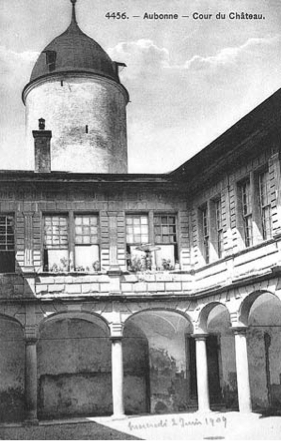Jean Baptiste Tavernier was one of the most prolific travelers and most remarkable men of the 17th Century. His adventures span forty years and 180,000 miles. My historical novel, The French Blue, tells the story of his life and adventures up until the sale of the Great Blue Diamond to Louis XIV, the Sun King of France. Though Tavernier lived to the age of eight four, we know little of the later life of after his ennoblement in 1669. For roughly a quarter of the price he received for the blue diamond, 36,750 ounces of gold, purchased the Chateau Aubonne just outside of Bern in what was then the Duchy of Savoy and with it the barony in 1670
The next we hear of him is in 1684 in Berlin as a guest of Fredrick William of Brandenburg. The Elector, anxious to equip his own East Indian venture, offers Tavernier an ambassadorship to India and appoints him Chamberlain and Counselor of his soon to be created Navy. After six weeks in Berlin, he visits several towns in Germany and Holland and returns to Aubonne in November.
In January 1985, Tavernier, now 80 years old, sells his Barony to the Marquis Henry du Quesne for 168,000 livres, approximately three times the purchase price. Ball suggests that he did this to raise money for the Brandenburg venture. This may be true but I believe that the canny old adventurer had his nose in the wind and knew that as a Protestant his time was up in France.
Victor Amadeus, Duke of Savoy was the son in law of Louis XIV. Louis issued The Edict of Fontainebleau in October effectively declaring Protestantism to be illegal. This was shortly followed by the Verification of Nobility, a decree that revoked the titles on non-catholic aristocrats. At first the Duke was reluctant to honor Louis decrees but caved in once his father in law threatened to send an army to invade the duchy.
By 1686 it was clear that The Elector’s East Indian venture had come to naught. Tavernier once again begins traveling. In 1687 he is in Switzerland and he arrives in Copenhagen sometime in 1687 or 1688.
According to information uncovered by Tavernier’s biographer Charles Joret, Tavernier now age 83 commences a seventh voyage to the Indies. Joret produces a fragment of an article published in a Danish journal by Frederick Rostgaard who states that he interviewed the aging adventurer who told him of his intention to travel to Persia via Moscow. (Joret p.384)..
Fredrick William of Brandenburg
On February 6, 1689, Tavernier received a passport signed by First minister Prince Vasily Gallitzin to enter Russia and to proceed from Smolensk to Moscow. Tavernier was required to report to the Bureau of Foreign Affairs once he reached the Russian capital.
The Russian Orthodox Church was rabidly anti-West and sought to curtail the influence of foreigners. In 1652 Czar Alexis decreed that all foreign nationals living in Moscow were forbidden to live or build churches within the city. They were required to reside in an area known as the German Suburb (Nemetskaya Sloboda). This quarter was located three miles northwest of the city along the Yauza river. The quarter was laid out European style with Dutch, French and English buildings including several Protestant churches. The quarter housed over 3,000 people and it is known that a number of French Huguenots (Tavernier’s co-coreligionists), fleeing the new wave of persecution in France, had taken up residence in the suburb (Massie, p.111). It is reasonable to assume that Tavernier would have been required to live in this quarter during his sojourn in Moscow.
In his biography of the French gem merchant, Charles Joret cites a letter written in 1876 by an M. I. Tokmakof claiming to have discovered Tavernier’s headstone in an old protestant cemetery in Moscow. Given the Czar’s decree it is reasonable to assume that this cemetery was located in the Nemetskaya Sloboda. Since all Protestant churches were located in the German Suburb, this provides some direct evidence that Tavernier did reside in the quarter. The headstone was intact except that the last two letters of the date had been obliterated leaving us with no exact knowledge as to the date of Tavernier’s death.
During his youth, Peter the Great befriended the British General, Patrick Gordon and several other foreigners and spent a great deal of his time in the German Suburb. This raises the interesting question of whether or not Tavernier met Peter. In his early youth, the young czar’s spiritual advisor, Patriarch Joachim, a fiercely anti-Western Orthodox cleric, controlled his access to the foreign quarter, but, according to historian Robert K. Massie (Peter The Great 1980), after the Patriarch’s sudden death on March 7, 1689, “Peter’s visits became so frequent that he seemed almost to live there.” (Massie, p.112)Russian Czar Peter the Great as a young man
As to a meeting between Jean Baptiste Tavernier and the future Peter the Great, it is interesting to speculate. The precocious young Czar was extremely curious about foreign lands. Tavernier was a celebrated traveler and a famous man and the evidence strongly suggests that he was in residence in the German Suburb in March of 1689. It is difficult to believe that the young Peter would not have sought him out. According to Joret, Tavernier died in Moscow sometime in 1689 at the age of 84.

